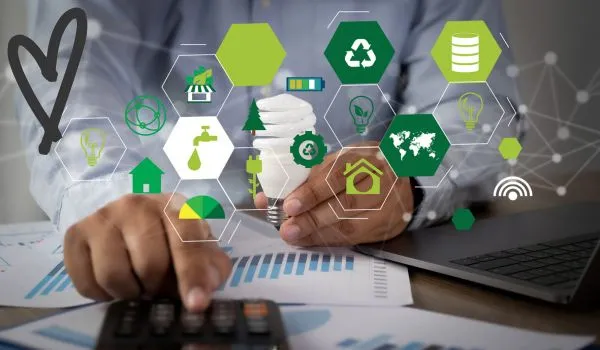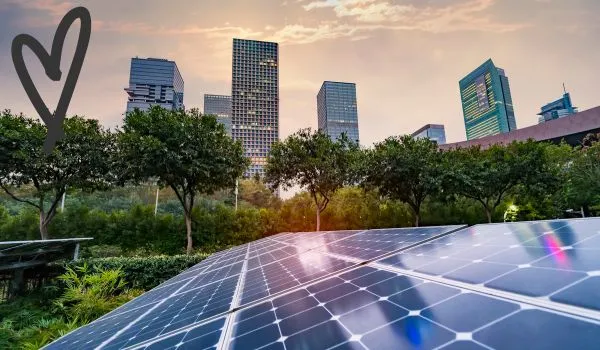What Is Human Sustainability?
“Embark on a transformative journey towards a balanced life and a thriving planet as we unravel the profound meaning of human sustainability, empowering you to make a lasting impact while embracing your true potential.”
Human sustainability is an important concept that refers to providing human beings, such as ourselves, with the resources and opportunities necessary to meet currently existing human needs without depleting future generations’ ability to do the same.
Human Sustainability Definition
Human sustainability means taking care of people now and in the future. It means making sure people can live healthy, happy lives. We need to invest in things like schools, hospitals, and healthy food so people can thrive. We also need to reduce bad things like crime, wars, and overusing resources. If we work together to help each other, we can have a sustainable world where all people get what they need to live well.
Human sustainable development means promoting well-being through things like education, health care, and equal opportunities so all people can live good lives.
Environmental Sustainability Around The World

From a global perspective, human sustainability is focused on preserving human societies and human cultures by maintaining ecological relationships so that they can ensure continuity and development over long time periods.
Get Your Hand on Your Eco-Friendly Living Starter Guide!
This means protecting our ecosystems, economy, society, and culture by adhering to principles of sustainability such as renewable energy sources, efficient resource management, and careful consideration of human health and well-being in light of environmental symbolism.
Economic Sustainability

Economic sustainability is a complex concept that requires a long-term, multi-sector approach. Economic sustainability involves the adoption of methods to produce and distribute wealth without degrading environmental or social values.
This can include wise fiscal policies, efficient resource use, and healthy economic output that maintains the earth’s finite resources while developing resilience within the communities affected by changing economic trends. Economic sustainability ultimately requires everyone to take responsibility for their part in promoting it among policymakers, businesses, and citizens alike.
Also read: Are Coffee Filters Compostable?
Achieving real success in this area will require collaborative efforts to ensure our current and future prosperity – financially as well as ecologically.
Aims Of Sustainability
The core principles behind these efforts typically include things such as low emissions, increased resource efficiency, and improved productivity. Economic sustainability aims to bring about an economic system that is both equitable and resilient in the face of changes to economic and environmental conditions.
The holistic approach requires consideration of both economic, environmental, social, and institutional aspects all working together for the benefit of society. The idea is to build an economy that is self-sustaining without posing threat to current or future generations and the environment.
More about sustainability: 7 Eco-Friendly Paper Towels That Are Sustainable
Regulations from governments play a large role in this process by formulating policies focused on advancing sustainable practices across public and private sectors alike.

Sustainability And Human Capital
Sustainability means investing for the long term to ensure a healthy economy, while human capital entails investing in the skills of the workforce. A combination of these two concepts is essential to any business’s success.
Sustainability encourages investment into infrastructure, resources, and processes that lead to more efficient use of natural resources and greener production methods. In terms of human capital, it focuses on strategies to improve employee productivity and enhance skill sets, such as through education and professional development training programs.
Investing in both areas can boost growth by increasing efficiency, reducing costs, and empowering workers with the right skills needed today so they can continue to make productive contributions in the future.

Sustainability In Health And Education Systems
Sustainability in health and education systems is a growing movement that is necessary to ensure long-term success. Such sustainability offers an alternative model of financial stability by investing in renewable resources, such as solar energy or wind power, or incentivizing the conservation of resources.
Related: What Are Green Plastics?
Sustainability initiatives also seek to reduce environmental pollutants, increase access to healthcare services, improve overall educational outcomes, reduce costs related to healthcare or education services, and increase overall well-being. Sustainability efforts must be balanced with other interests that could threaten the health or education system’s long-term success, such as rising prices for goods and services, market competition, poor infrastructure investments, and technological advancements.
To ensure that sustainability practices are successful, policymakers must take into account all facets of society when creating solid plans that do justice to both present and future generations.
Human Sustainability And Natural Resources
Human sustainability and natural resources are deeply interconnected. Human lives and livelihoods directly rely on the overuse and depletion of natural resources, which is why a holistic approach to sustainability is so important.
As human populations continue to grow, people must understand how to use nature without exploiting or damaging its capacity to restore itself. By practicing conservation methods such as reusing materials, reducing waste, planting more trees, and promoting renewable energy sources, individuals can significantly reduce their environmental footprint while contributing to larger sustainability initiatives.
You may like: Is Glass Biodegradable?
The key to preserving our planet lies in understanding the vital role of natural elements in supporting the global population’s long-term health and well-being.
Sustainable Development Overview
Sustainable development is a global strategy that seeks to ensure economic and social progress for current generations while maintaining the integrity of our environment for future generations. Sustainable development starts from a systems-thinking approach that considers the relationships between people and their environment, as well as ecosystems, economies, and technology.
Sustainable development identifies policies, strategies, and initiatives that enhance economic well-being in an environmentally balanced way with effective governance, rule of law, and accountable institutions. Sustainable development goals include reducing poverty, protecting the environment, and increasing access to sustainable sources of energy.
It advocates prioritizing people’s dignity and rights by investing in basic education and health resources due to their social and economic benefits. Sustainable development initiatives are multi-dimensional interventions that strive to make local areas resilient against climate change, increase the level of physical activities among the general public, etc.
Ultimately, sustainable development strives to build better societies that benefit all stakeholders without compromising the integrity of our planet.

The Importance Of Sustainability
The importance of sustainability cannot be understated in today’s world. The global population and economy have both seen dramatic growth over the last few decades, resulting in increased pressure on natural resources.
The environmental costs of this immense development are evident, leaving many uncertain about the future of our planet. The need for sustainable solutions is paramount if we are to prevent further strain on natural resources and mitigate human-driven global warming.
Sustainable practices such as making environmentally conscious decisions when purchasing products and reducing waste production are essential steps towards a more sustainable future. The global shift towards renewable energy sources is also key, as these technologies become increasingly accessible and efficient.
The implementation of sustainability-focused initiatives and policies on the local, national and international levels stands to benefit humanity now and in the years to come.
More from this site: Are Poly Mailers Eco-Friendly?
Real-Life Examples of Human Sustainability
Here are 3 everyday ways to practice human sustainability:
- Drive less by walking, biking, or taking public transit instead of driving. This cuts down on emissions and improves air quality.
- Buy local and sustainably made goods when possible. This supports local businesses and reduces the environmental impact of transport and manufacturing.
- Support policies and community programs that provide healthcare, education, and opportunity. Ensuring access to basic needs creates conditions for people to live healthy, fulfilling lives.
Overall, human sustainability is about making choices that reduce environmental harm while promoting the well-being of all people now and in the future. We can all contribute through our daily actions and civic engagement.
Conclusion
Therefore, human sustainability involves safeguarding economic growth while at the same time minimizing environmental degradation and exploitation of natural resources. We must always be mindful of how what we put into the environment now will impact future generations – this idea is fundamental for human maintenance.
Sources:
- https://www.futurelearn.com/info/courses/sustainable-business/0/steps/78337
- https://skoot.eco/articles/the-4-pillars-of-sustainability-explained
- https://ideapod.com/sustainability-examples-in-everyday-life/






